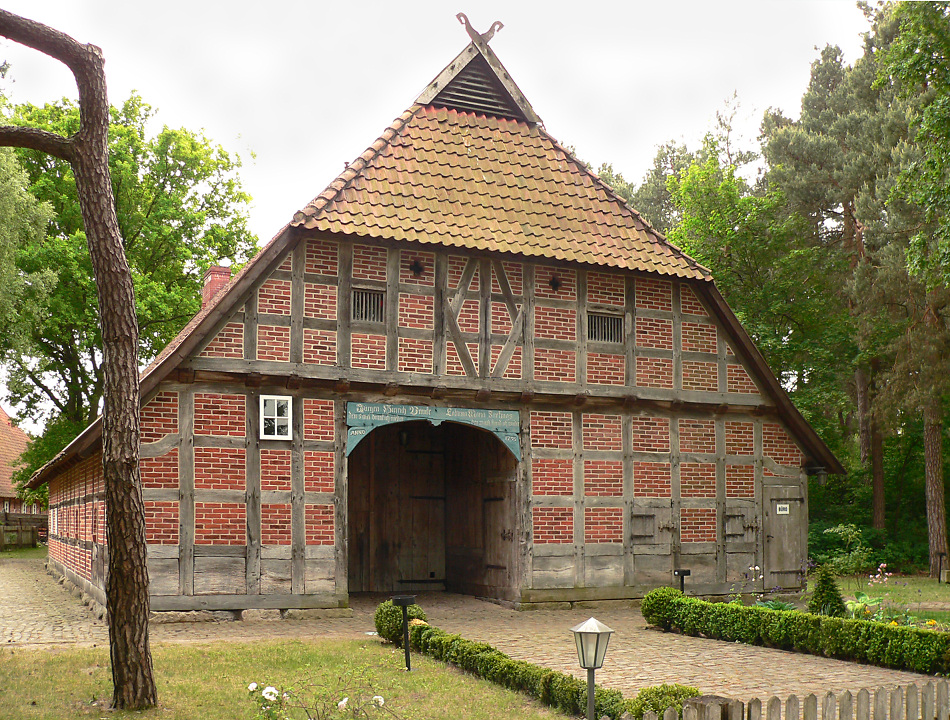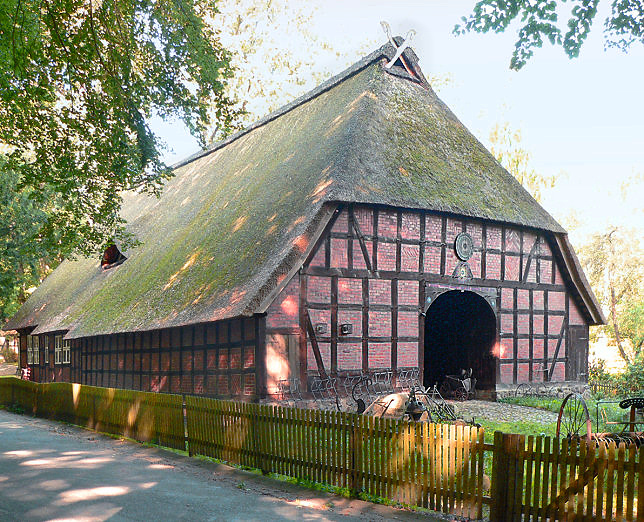|
Winsen (Aller)
Winsen an der Aller () or Winsen (Aller) is a town in the district of Celle in the German state of Lower Saxony. Geography Winsen has around 12,900 inhabitants and lies on the southern perimeter of the Lüneburg Heath, on the banks of the Aller, somewhat to the west of its tributary, the Örtze and about 15 km northwest of Celle. As well as the town itself, the borough of Winsen also includes the villages of Bannetze, Meißendorf, Stedden, Südwinsen, Thören, Walle and Wolthausen. History The name of the town is derived from ''Wynhausen'' (''Wyn'' = ''Weideland'' or meadow). Winsen's church is dedicated to John the Baptist. Because all villages with churches named after this patron saint appeared around 800 it is suspected that this was also when Winsen was founded. Today Winsen is a favourite local recreation and holiday area and, since 1975, has been recognised officially as a climatic health resort (''Luftkurort''). Politics Coat of Arms The coat of arms of the town ... [...More Info...] [...Related Items...] OR: [Wikipedia] [Google] [Baidu] |
Landesamt Für Statistik Niedersachsen
The statistical offices of the German states (German language, German: ''Statistische Landesämter'') carry out the task of collecting official statistics in Germany together and in cooperation with the Federal Statistical Office of Germany, Federal Statistical Office. The implementation of statistics according to Article 83 of the Basic Law for the Federal Republic of Germany, constitution is executed at state level. The Bundestag, federal government has, under Article 73 (1) 11. of the constitution, the exclusive legislation for the "statistics for federal purposes." There are 14 statistical offices for the States of Germany, 16 states: See also * Federal Statistical Office of Germany References {{Reflist National statistical services, Germany Lists of organisations based in Germany, Statistical offices Official statistics, Germany ... [...More Info...] [...Related Items...] OR: [Wikipedia] [Google] [Baidu] |
Theodor Lohmann
Theodor Christian Lohmann (October 18, 1831 – August 31, 1905) was a 19th-century German administrative lawyer, civil servant and social reformer, second in importance only to Otto von Bismarck in the formation of the German social insurance system. He is considered one of the major forces advocating for legislation for occupational safety and health, as co-architect of Bismarck's social security and as a seminal figure in the relation of ''Diakonie'' and social politics. Private life, education, and early career Theodor Lohmann was the seventh of eight children in a rural, patriarchal Lutheran household. From early on Lohmann had been influenced by the pious German Lutheran ''Great Awakening'' movement of Ludwig Harms, characterized by proselytism and sanctification. Lohmann's father, Ernst Heinrich Lohmann (1797–1856), was a merchant and owner of a brickyard. His mother, Johanna Juliana Lohmann (born Hardegen), died early. Theodor Lohmann attended the gymnasium in Celle. Fro ... [...More Info...] [...Related Items...] OR: [Wikipedia] [Google] [Baidu] |
Baroque
The Baroque (, ; ) is a style of architecture, music, dance, painting, sculpture, poetry, and other arts that flourished in Europe from the early 17th century until the 1750s. In the territories of the Spanish and Portuguese empires including the Iberian Peninsula it continued, together with new styles, until the first decade of the 19th century. It followed Renaissance art and Mannerism and preceded the Rococo (in the past often referred to as "late Baroque") and Neoclassical styles. It was encouraged by the Catholic Church as a means to counter the simplicity and austerity of Protestant architecture, art, and music, though Lutheran Baroque art developed in parts of Europe as well. The Baroque style used contrast, movement, exuberant detail, deep colour, grandeur, and surprise to achieve a sense of awe. The style began at the start of the 17th century in Rome, then spread rapidly to France, northern Italy, Spain, and Portugal, then to Austria, southern Germany, and Russia. B ... [...More Info...] [...Related Items...] OR: [Wikipedia] [Google] [Baidu] |
Lüneburg War Of Succession
Lüneburg (officially the ''Hanseatic City of Lüneburg'', German: ''Hansestadt Lüneburg'', , Low German ''Lümborg'', Latin ''Luneburgum'' or ''Lunaburgum'', Old High German ''Luneburc'', Old Saxon ''Hliuni'', Polabian ''Glain''), also called Lunenburg ( ) in English, is a town in the German state of Lower Saxony. It is located about southeast of another Hanseatic city, Hamburg, and belongs to that city's wider metropolitan region. The capital of the district which bears its name, it is home to roughly 77,000 people. Lüneburg's urban area, which includes the surrounding communities of Adendorf, Bardowick, Barendorf and Reppenstedt, has a population of around 103,000. Lüneburg has been allowed to use the title " Hansestadt" (''Hanseatic Town'') in its name since 2007, in recognition of its membership in the former Hanseatic League. Lüneburg is also home to Leuphana University. History ImageSize = width:1050 height:100 PlotArea = width:1000 height:50 left:50 bottom:25 ... [...More Info...] [...Related Items...] OR: [Wikipedia] [Google] [Baidu] |
Long House
A longhouse or long house is a type of long, proportionately narrow, single-room building for communal dwelling. It has been built in various parts of the world including Asia, Europe, and North America. Many were built from timber and often represent the earliest form of permanent structure in many cultures. Types include the Neolithic long house of Europe, the Norman Medieval Longhouses that evolved in Western Briton (''Tŷ Hir)'' and Northern France (''Longère)'' and the various types of longhouse built by different cultures among the indigenous peoples of the Americas. Europe *The Neolithic long house type was introduced with the first farmers of central and western Europe around 5000 BCE, 7,000 years ago. These were farming settlements built in groups of six to twelve and were home to large extended families and kin. *The Germanic cattle-farmer longhouses emerged along the southwestern North Sea coast in the third or fourth century BCE and may be the ancestors of sever ... [...More Info...] [...Related Items...] OR: [Wikipedia] [Google] [Baidu] |
Gothic Architecture
Gothic architecture (or pointed architecture) is an architectural style that was prevalent in Europe from the late 12th to the 16th century, during the High and Late Middle Ages, surviving into the 17th and 18th centuries in some areas. It evolved from Romanesque architecture and was succeeded by Renaissance architecture. It originated in the Île-de-France and Picardy regions of northern France. The style at the time was sometimes known as ''opus Francigenum'' (lit. French work); the term ''Gothic'' was first applied contemptuously during the later Renaissance, by those ambitious to revive the architecture of classical antiquity. The defining design element of Gothic architecture is the pointed or ogival arch. The use of the pointed arch in turn led to the development of the pointed rib vault and flying buttresses, combined with elaborate tracery and stained glass windows. At the Abbey of Saint-Denis, near Paris, the choir was reconstructed between 1140 and 1144, draw ... [...More Info...] [...Related Items...] OR: [Wikipedia] [Google] [Baidu] |
Post Mill
The post mill is the earliest type of European windmill. Its defining feature is that the whole body of the mill that houses the machinery is mounted on a single vertical post, around which it can be turned to bring the sails into the wind. All post mills have an arm projecting from them on the side opposite the sails and reaching down to near ground level. With some, as at Saxtead Green, the arm carries a fantail to turn the mill automatically. With the others the arm serves to rotate the mill into the wind by hand. The earliest post mills in England are thought to have been built in the 12th century. The earliest working post mill in England still used today is to be found at Outwood, Surrey. It was built in 1665. The earliest remaining example of a non-operational mill can be found in Great Gransden in Cambridgeshire, built in 1612.Windmills in Huntingdon and Peterborough. p. 3. Their design and usage peaked in the 18th and 19th centuries and then declined after the introdu ... [...More Info...] [...Related Items...] OR: [Wikipedia] [Google] [Baidu] |
Low German House
The Low German house or ''Fachhallenhaus'' is a type of timber-framed farmhouse found in northern Germany and the easternmost Netherlands, which combines living quarters, byre and barn under one roof. It is built as a large hall with bays on the sides for livestock and storage and with the living accommodation at one end. The Low German house appeared during the 13th to 15th centuries and was referred to as the Low Saxon house (''Niedersachsenhaus'') in early research works. Until its decline in the 19th century, this rural, agricultural farmhouse style was widely distributed through the North German Plain, all the way from the Lower Rhine to Mecklenburg. Even today, the ''Fachhallenhaus'' still characterises the appearance of many north German villages. Name The German name, ''Fachhallenhaus'', is a regional variation of the term ''Hallenhaus'' ("hall house", sometimes qualified as the "Low Saxon hall house"). In the academic definition of this type of house the word ''Fac ... [...More Info...] [...Related Items...] OR: [Wikipedia] [Google] [Baidu] |
Winsen Museum Farm
The Winsen Museum Farm (german: Museumshof Winsen) is an open-air museum in Winsen (Aller) in the north German state of Lower Saxony. It was started in 1982 and comprises a typical farmyard from the southern Lüneburg Heath around which other buildings, characteristic of the region, are grouped. Museum site The museum is situated in the residential part of Winsen within an extensive, tree-covered area with a low hill and the typical appearance of heath country. The museum is sponsored by the Winsen Local Heritage Society (''Winsener Heimatverein'') which was founded in 1979 by 10 people. Currently (2009) the society has about 800 members. The members have largely carried out the building work on the museum site themselves. Buildings All the buildings in the open-air museum were moved to this site. They were originally built between the mid-17th century and the 20th century. Their interiors and the implements exhibited stem mainly from the 19th century. Farmyards The c ... [...More Info...] [...Related Items...] OR: [Wikipedia] [Google] [Baidu] |
Meißendorf Lakes And Bannetzer Moor
Meißendorf is a village and ''Ortschaft'' (municipal division) of the municipality of Winsen an der Aller in the Lower Saxon district of Celle in northern Germany. December 2020. It lies northwest of Winsen an der Aller. It derives its name from the river which flows through the village. 1,666 people have their main residence in Meißendorf and 224 have a second home here. There is also a campsite with about 100 permanent pitches and a mobile home site. The Lower Saxony Nature Conservation Society runs a nature conservation centre on the Sunder Estate (''Gut Sunder'') with 600 participant ... [...More Info...] [...Related Items...] OR: [Wikipedia] [Google] [Baidu] |




.jpg)



